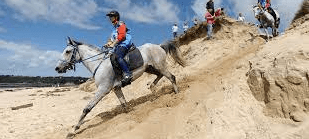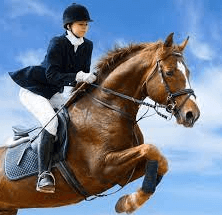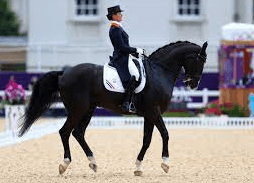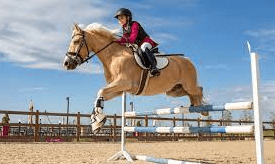How Can I Improve My Horse Riding Skills?

Are you a horse enthusiast seeking to improve your horse riding skills? Look no further! In this article, we will delve into the various strategies and techniques that can help you enhance your equestrian abilities. Horse riding is not only a thrilling experience but also a deeply fulfilling pursuit that allows you to connect with these majestic creatures and tap into your own sense of freedom.
To embark on this journey towards becoming an accomplished rider, it is crucial to understand the basics of horse anatomy and behavior. By familiarizing yourself with their physical structure and innate tendencies, you can develop a deeper understanding of how to communicate effectively with your equine partner. Additionally, mastering proper riding posture and position is essential for achieving balance, stability, and control in the saddle. These foundational elements lay the groundwork for all other aspects of horse riding proficiency.
As we explore further, we will discuss the importance of strengthening your core muscles and improving overall balance through targeted exercises. Building a strong core not only enhances your stability while mounted but also improves your ability to respond quickly and effectively to any unexpected movements or challenges during rides.
Moreover, practicing regularly and consistently is key in honing your equestrian skills. The more time spent in the saddle, the more comfortable and confident you become as a rider.
So let us dive deeper into each aspect step by step, enabling you to unlock new levels of expertise in horse riding.
Understand the Basics of Horse Anatomy and Behavior
Understanding the fundamentals of equine anatomy and behavior is essential for enhancing one’s equestrian skills. Horse training requires a deep understanding of how horses think, move, and react to different stimuli. Equine behavior plays a crucial role in establishing trust and communication between the rider and the horse.
By studying horse anatomy, riders can learn about the structure and function of various body parts, such as the muscles, bones, and joints, which directly impact their riding abilities. This knowledge enables riders to make subtle adjustments in their position and aids to achieve better balance and harmony with their horse.
Additionally, understanding equine behavior helps riders anticipate how a horse may react in different situations. Horses are social animals with natural instincts that influence their responses to certain stimuli or cues from their rider. By comprehending these behaviors, riders can effectively communicate with their horses using appropriate signals and commands, creating a positive learning environment for both horse and rider.
Ultimately, developing a thorough understanding of equine anatomy and behavior lays a solid foundation for improving horse riding skills by fostering effective communication and promoting harmony between rider and horse.
Develop Proper Riding Posture and Position
Mastering the art of equestrianism involves cultivating a well-balanced and aligned riding posture and position that not only enhances control but also establishes a harmonious connection with the magnificent animal beneath. Improving balance is crucial in horse riding as it allows the rider to maintain stability and effectively communicate with the horse. A strong core is essential for maintaining an upright posture, absorbing movement, and staying centered on the horse’s back. To achieve this, riders can engage in specific exercises such as Pilates or yoga that focus on strengthening their core muscles. Additionally, riders should pay attention to their alignment by ensuring that their ear, shoulder, hip, and heel are in line while riding. This proper alignment helps distribute weight evenly and allows for better communication through subtle shifts in body position. By developing these aspects of riding posture and position, riders can enhance their control over the horse while establishing a deeper connection based on trust and harmony.
Strengthen Your Core and Improve Balance
Enhancing equestrian abilities involves the cultivation of a strong core and improved balance, which are crucial aspects of achieving a well-balanced riding posture and position.
Strengthening the core muscles is essential as they provide stability and support to the rider’s body while on horseback.
Incorporating exercises such as yoga or Pilates can help strengthen the core by targeting the abdominal, back, and pelvic muscles.
These exercises not only enhance strength but also improve flexibility, coordination, and body awareness.
Additionally, improving balance is vital for maintaining proper alignment in the saddle.
Engaging in activities like standing on one leg or using a balance board can help develop stability and proprioception skills necessary for riding.
By incorporating these practices into their training routine, riders can enhance their overall performance and feel more connected to their horses while enjoying the freedom that comes with mastering this ancient art form.
Practice Regularly and Consistently
Consistency in regular practice is crucial for riders to develop and maintain a strong foundation in their equestrian abilities.
To improve horse riding skills, riders should understand the various types of horse equipment and how they can be used effectively. This includes becoming familiar with different bits, bridles, and saddles, as well as understanding their purpose and proper usage.
Additionally, it is important to work on improving leg aids and seat aids, which are essential for communicating with the horse and maintaining balance while riding.
Riders should practice exercises that focus on strengthening their legs and core muscles, such as posting at the trot or performing transitions between gaits.
By practicing regularly and consistently, riders can enhance their understanding of horse equipment and improve their ability to communicate with the horse through leg and seat aids, ultimately enhancing their overall riding skills.
Take Lessons from a Qualified Instructor
Seeking guidance from a qualified instructor is crucial for riders to acquire valuable knowledge and skills, as their expertise serves as a beacon illuminating the path towards equestrian proficiency. Developing horsemanship techniques requires a deep understanding of the horse’s behavior, anatomy, and psychology. A qualified instructor can provide riders with detailed instruction on how to effectively communicate with their horse through subtle cues, helping them build a strong partnership based on trust and respect. Furthermore, instructors can guide riders in building confidence in the saddle by teaching proper body position, balance, and control. They can also provide exercises and feedback tailored to each rider’s individual needs, allowing them to progress at their own pace while continuously improving their riding skills. In order to engage this audience with a subconscious desire for freedom, it is important to emphasize that taking lessons from a qualified instructor not only enhances safety but also opens up new possibilities for riders to explore the vast world of equestrian sports and activities.
| Benefits of Taking Lessons from a Qualified Instructor | Examples |
|---|---|
| Enhanced safety | Correcting bad habits or dangerous riding practices |
| Improved technique | Mastering advanced maneuvers such as jumping or dressage |
| Increased confidence | Overcoming fears or insecurities in the saddle |
By highlighting these benefits in an engaging manner, riders are more likely to recognize the value of seeking professional guidance and be motivated to invest time and effort into improving their horse riding skills under the watchful eye of an experienced instructor.
Learn Different Riding Styles and Techniques
Acquiring knowledge of various riding styles and techniques is essential for riders to broaden their horizons and expand their equestrian repertoire. By learning different riding disciplines, riders can gain a deeper understanding of the diverse ways in which horses can be trained and ridden. This not only enhances their overall skillset but also allows them to adapt to different situations and challenges that may arise during horseback riding.
Additionally, exploring advanced riding techniques enables riders to refine their abilities and improve their communication with the horse. These techniques focus on developing subtler cues, such as using leg aids or weight shifts, to achieve precise movements and transitions. Moreover, mastering these advanced techniques instills confidence in the rider’s ability to handle more complex maneuvers, such as jumping or dressage movements.
Understanding different riding styles and techniques provides riders with a well-rounded education that fosters versatility, adaptability, and an overall sense of mastery in the art of horseback riding.
Build Trust and Communication with Your Horse
Developing trust and communication with your horse is an essential aspect of improving your horse riding skills. By establishing a strong bond with your equine partner, you can enhance not only your riding abilities but also the overall experience for both you and the horse.
One way to accomplish this is by developing patience, as it allows you to understand and respond appropriately to your horse’s needs. Patience enables you to take the time necessary to build a foundation of trust, which is crucial for effective communication between rider and horse.
Additionally, building confidence in yourself as a rider will contribute significantly to the trust and understanding between you and your horse. Confidence allows you to assertively communicate with your mount, providing clear cues and guidance while also remaining calm and composed.
Through patience and confidence, riders can foster a deep connection with their horses that ultimately enhances their riding skills.
Master Basic Riding Skills, such as Walking, Trotting, and Cantering
Mastering basic riding skills, such as walking, trotting, and cantering, is crucial for riders to establish a solid foundation in their equestrian journey. These fundamental horse riding techniques allow riders to effectively communicate with their horses and develop a harmonious partnership.
Walking is the first gait that beginners learn, as it helps them understand how to maintain balance and coordination while sitting on the horse’s back.
Trotting introduces riders to the rhythmic up-and-down motion of the horse’s trot gait, challenging them to stay centered and follow the movement.
Cantering is a faster and more exhilarating gait that requires riders to have control over their body position and be able to adjust their speed accordingly.
To master these skills, riders must engage in various horse riding exercises that focus on balance, posture, leg aids, and rein contact. These exercises include practicing transitions between gaits, circles, serpentines, figure-eights, leg yielding, and shoulder-in movements.
By consistently working on these techniques through proper training and guidance from experienced instructors or trainers, riders can enhance their riding abilities and pave the way for further advancement in their equestrian pursuits.
Learn to Control Speed and Transition Smoothly
Gaining control over speed and seamlessly transitioning between gaits is akin to conducting a symphony, where the rider’s subtle cues harmonize with the horse’s movements.
To improve your horse riding skills in this area, it is important to focus on developing a smooth transition from one gait to another and maintaining a controlled speed throughout. Here are three key aspects to consider:
- Balance: Achieving balance in the saddle is crucial for controlling speed and transitioning smoothly. By maintaining a centered position and distributing your weight evenly, you can effectively communicate with your horse and guide them through various speeds without abrupt changes.
- Rhythm: Developing a consistent rhythm with your horse’s strides allows for fluid transitions between gaits. By practicing different speeds within each gait, you can refine your ability to adjust the tempo while maintaining harmony with your horse’s natural movement.
- Aids: Utilizing precise aids or cues is essential for communicating with your horse effectively. Clear communication through rein pressure, leg aids, and seat cues will help convey your desired speed adjustments and transitions smoothly.
By focusing on these aspects of riding, you can gradually enhance your ability to control speed and seamlessly transition between gaits like an experienced equestrian.
Mastering these skills not only improves safety but also enhances the overall riding experience by creating a sense of unity between rider and horse—a truly liberating feeling that comes from mastering the art of horsemanship.
Improve Your Jumping Skills, if Interested
To further enhance your horse riding skills, you may want to consider improving your jumping technique and increasing your jumping height. Jumping is a thrilling aspect of equestrian sports that requires precision, balance, and coordination between the rider and the horse. By focusing on refining your jumping skills, you can not only increase your overall performance but also experience a greater sense of accomplishment and freedom in your riding. To achieve this, it is essential to work on various aspects such as position, timing, and control during takeoff and landing. Developing a strong foundation in flatwork exercises can greatly contribute to better jumping abilities. Incorporating grid work exercises into your training routine can help improve both rider and horse confidence while enhancing their ability to navigate complex jump sequences with ease. Additionally, regularly practicing over different types of jumps can help sharpen your reflexes and adaptability when faced with diverse obstacles in competition settings. Remember that patience, consistency, and dedication are key when aiming to excel in jumping disciplines. By continuously honing your technique under the guidance of an experienced instructor or coach, you can steadily progress towards achieving higher jumps while maintaining safety for both yourself and your equine partner.
| Aspect | Description |
|---|---|
| Position | Maintaining correct posture throughout the jump by keeping a balanced position over the saddle with eyes up |
| Timing | Establishing an effective approach rhythm to ensure proper takeoff timing |
| Control | Utilizing aids such as leg pressure and rein contact to guide the horse’s speed, direction, and impulsion |
| Grid Work Exercises | Incorporating carefully designed patterns of multiple jumps arranged at specific distances to improve technical skills |
| Variety of Jumps | Practicing over different types of fences such as verticals, oxers, combinations, or water jumps for versatility in handling various obstacles |
By diligently working on these aspects while gradually increasing difficulty levels in training sessions or competitions, you can significantly enhance your jumping abilities and reach new heights in your horse riding journey.
Take Part in Competitions or Trail Riding for Real-Life Experience
Participating in competitions or trail riding can provide valuable real-life experience for riders looking to further develop their equestrian abilities.
Competing in horse shows allows riders to showcase their skills and receive feedback from judges, which can be instrumental in identifying areas for improvement. It also provides an opportunity to observe and learn from other experienced riders, gaining insights into different techniques and strategies.
Trail riding, on the other hand, offers a chance to explore new trails and environments, allowing riders to hone their adaptability and problem-solving skills. It requires navigating various terrains and obstacles, requiring riders to make quick decisions while maintaining control of their horses.
Both activities offer practical experiences that cannot be replicated in a controlled training environment and can help riders gain confidence, improve their technique, and develop a deeper understanding of horsemanship.
So whether it’s the thrill of competition or the joy of exploring new trails, participating in these real-life experiences is an excellent way for riders to advance their horse riding skills.
Take Care of Your Horse’s Well-Being and Health
Ensuring the well-being and health of a horse is essential for maintaining its optimal condition and performance. For example, regular veterinary check-ups can help identify any potential health issues early on, allowing for prompt treatment and prevention of further complications. Additionally, proper horse grooming is crucial in maintaining their overall well-being. Regular brushing not only keeps the horse’s coat clean and shiny but also helps to distribute natural oils throughout the hair, promoting a healthy coat. Moreover, grooming allows for close inspection of the horse’s skin for any signs of irritation or injury that may require medical attention. Alongside grooming, nutrition management plays a vital role in a horse’s well-being. Providing a balanced diet rich in high-quality hay, grains, and supplements tailored to their specific needs is crucial for their overall health and performance. Adequate hydration should also be ensured by providing access to fresh water at all times. By prioritizing both proper grooming techniques and nutrition management, horse owners can contribute significantly to their horses’ well-being and enhance their riding experience.
| Horse Grooming | Nutrition Management |
|---|---|
| Regular brushing keeps the coat clean and distributes natural oils | Provide balanced diet with high-quality hay, grains, and supplements |
| Inspect skin for signs of irritation or injury during grooming | Tailor nutrition plan according to individual needs |
| Promotes healthy coat by distributing natural oils | Ensure adequate hydration by providing fresh water at all times |
Continuously Seek Knowledge and Learn from Experienced Riders and Professionals
Continuously seeking knowledge and learning from experienced riders and professionals is essential for expanding one’s understanding of horse care and riding techniques.
When it comes to improving horse riding skills, it is crucial to have a deep knowledge of the different types of horse riding equipment available in order to choose the right gear for both the rider and the horse. From saddles to bridles, each piece of equipment plays a vital role in ensuring comfort, safety, and effective communication between rider and horse.
Additionally, finding the right horse that suits your skill level and goals is equally important. It is essential to seek guidance from experienced riders or professionals who can help you assess a potential horse’s temperament, training background, health condition, and suitability for your specific needs.
By continuously seeking knowledge about equipment choices and understanding how to find the right horse, riders can enhance their overall horsemanship skills while ensuring the well-being of both themselves and their equine partners.
Frequently Asked Questions
How do I choose the right horse for my riding goals?
To choose the right horse for your riding goals, consider factors such as temperament, conformation, breed characteristics, and training level. Assess suitability based on your riding level and discipline through observation, test rides, and consultations with experienced professionals.
What are some common mistakes that beginner riders make?
Beginner riders often make common mistakes such as improper posture, lack of balance, and ineffective communication with the horse. These can be prevented by practicing correct body alignment, developing core strength, and taking professional lessons to improve riding skills.
How can I improve my confidence while riding?
To improve balance and overcome fear while riding, it is crucial to focus on developing core strength, practicing proper posture, and gradually increasing the difficulty of exercises. Building a strong foundation will enhance confidence and ultimately lead to improved horse riding skills.
Are there any specific exercises I can do outside of riding to improve my skills?
Strengthening exercises and mental preparation are key components to improving horse riding skills. Engaging in specific workouts targeting core muscles, balance, and flexibility can enhance overall performance and control. Additionally, practicing visualization techniques aids in developing a focused mindset for riding.
How long does it typically take to become a skilled rider?
Measuring progress as a rider can be done by setting goals, tracking improvements in balance, control, and timing. Common challenges beginner riders face include developing proper posture, building confidence, and understanding horse behavior.
Conclusion
In conclusion, improving one’s horse riding skills requires a comprehensive understanding of horse anatomy and behavior. This knowledge sets the foundation for developing proper riding posture and position, which is crucial for effective communication with the horse.
Strengthening the core and improving balance through targeted exercises further enhances the rider’s ability to maintain stability and control while in motion.
Consistent practice is key to refining skills and building muscle memory. Taking lessons from a qualified instructor provides valuable guidance and feedback, allowing riders to fine-tune their technique. For those interested in jumping, focusing on improving jumping skills can add an exciting dimension to their equestrian journey.
Participating in competitions or trail riding offers real-life experience that challenges riders to apply their skills under different circumstances. Additionally, caring for the well-being and health of the horse is essential as it contributes to a harmonious partnership between rider and equine.
Continuous learning from experienced riders and professionals ensures ongoing growth in knowledge and expertise. Seeking out new information, attending workshops or clinics, can provide valuable insights into advanced techniques or emerging trends within the equestrian community.
In summary, by diligently following these steps – understanding horse anatomy and behavior, maintaining proper posture and position, strengthening core muscles, practicing consistently, taking lessons from qualified instructors, improving jumping skills if desired, participating in competitions or trail riding experiences, prioritizing horse welfare, continuously seeking knowledge from experienced individuals – one can greatly enhance their horse riding abilities. So saddle up with determination because sky’s the limit when it comes to honing your equestrian prowess!


